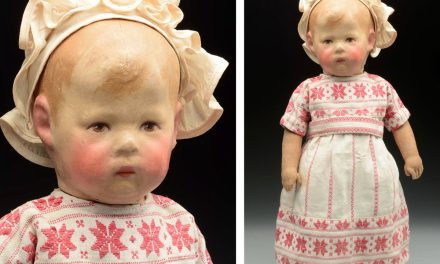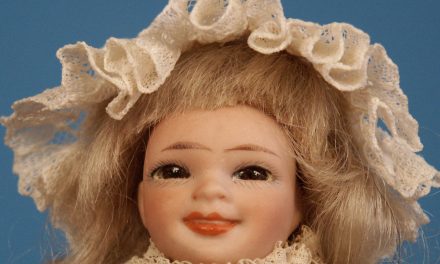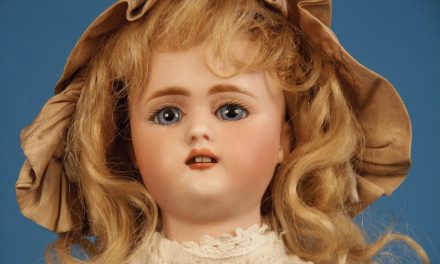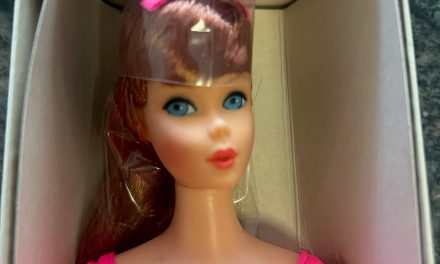By Karen B. Kurtz
Photos by Kwei-lin Lum
Topsy-Turvy dolls are complex, complicated artifacts of material culture that are often over-simplified in bite-sized media. The word “topsy-turvy” means “upside-down” or “utter confusion,” and the dolls have certainly lived up to their name.
Topsy-Turvies are novelties: one doll with two opposing characters joined at the waist; two heads, four arms, no legs. Flipping Topsy-Turvy’s skirt back and forth reveals the other doll. There are two dolls in one, yet only one is available for play.
Kwei-lin Lum, a California researcher, collector, artist, and third-generation Chinese American, discovered her first Topsy-Turvy doll in 2014. “The shocking welding of Black and white characters drew me in,” she said. “Topsy-Turvy dolls thrived in times that few of us understand today. I wanted to understand the truths that drove their continued popularity over two centuries.”
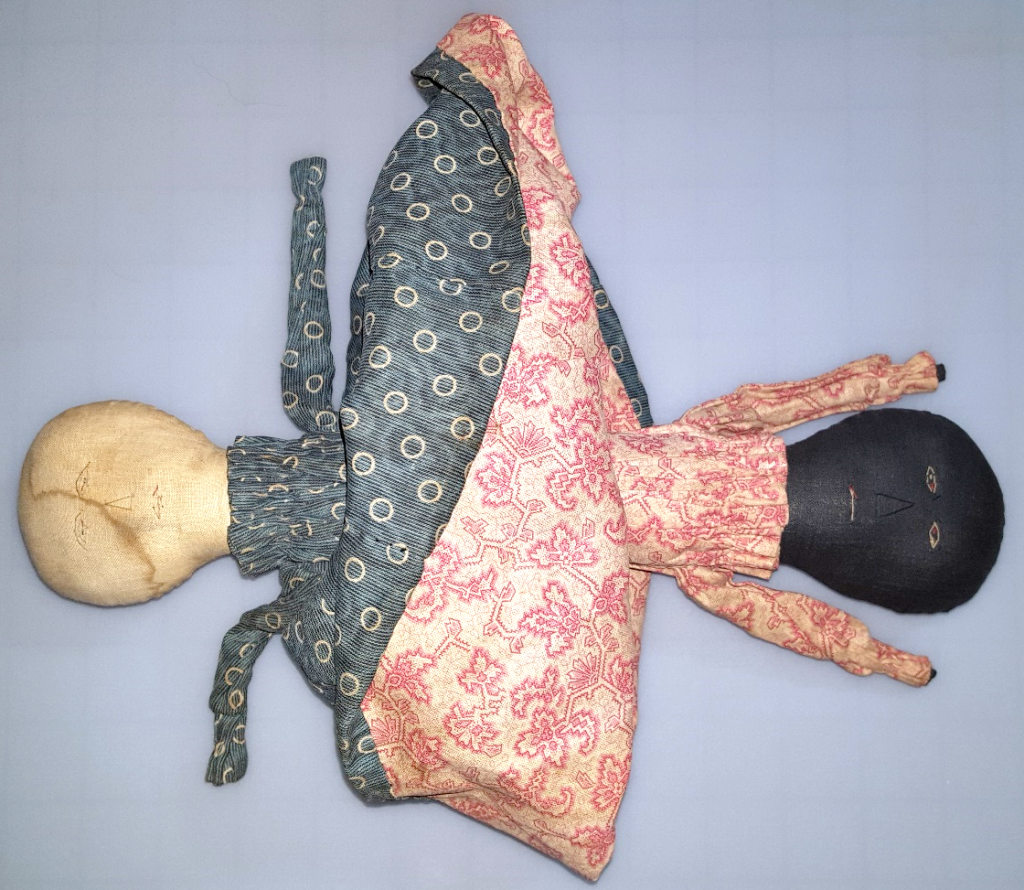

Since then, Lum has amassed a large collection of 300 Topsy-Turvy dolls plus an unprecedented database of more than 10,000 images. Her groundbreaking research shines a bright light on “nearly every type of Topsy-Turvy doll I could find.” Her collection proves Topsy-Turvies transcend all ethnicities, genders, economic statuses, and walks of life. They are dolls of imagination, creativity, and whimsy.
“I was born in Honolulu and raised with people of many ethnicities,” Lum said. “Topsy-Turvy dolls are part of my lifelong affinity for cross-cultural themes. Unexpected juxtapositions of Western icons with Asian or Black ones had long occurred before 1970, outside the boundary of political correctness.”
Lum’s process involves going “beyond the confines of the topic to find the big picture and the context. I watch where information lands, investigate related topics for insights, and shrink back to the main work, better informed,” she said.
Fabric-dating techniques help determine an early doll’s production period. White faces are often stained, but Lum rarely cleans her Topsy-Turvies. They display well on doll stands.
Shrouded in Mystery
Lum’s research into Topsy-Turvy origins goes back to before the trans-Atlantic slave trade. “The oldest known Topsy-Turvy dolls are handmade,” Lum said. “They are found in the United States. No antique Topsy-Turvies have been discovered outside the U.S. While African information is hard to obtain, two-headed African objects exist. Double objects are prominent in West African culture.”
Most enslaved Africans arrived in the Americas from 23 modern-day countries: Benin, Burkina Faso, Burundi, Cameroon, the Republic of Cabo Verde, Central African Republic, Chad, the Democratic Republic of Congo, Gabon, Gambia, Ghana, Guinea, Guinea-Bissau, the Republic of Côte d’Ivoire, Liberia, Mali, Mauritania, Nigeria, Rwanda, São Tomé and Principe, Senegal, Sierra Leone, and Togo.
Twenty-five percent of America’s enslaved peoples came from the Democratic Republic of Congo. Lum studied the Kozo dog (nkisi kozo) from the Kongo people, a spiritual object with a receptacle for holding medicinal substances to cure physical, social, or spiritual ailments. It symbolizes a mediator between two worlds: living and dead, seen and unseen.
“Opposing sides of nkisi kozo are conjoined but they do not interact directly, just like Topsy-Turvy dolls,” Lum said. “Studies based on populations from specific regions show how an African culture survived over centuries, migrating to the Americas and the Caribbean via African religious practices, where they were likely reinterpreted.”

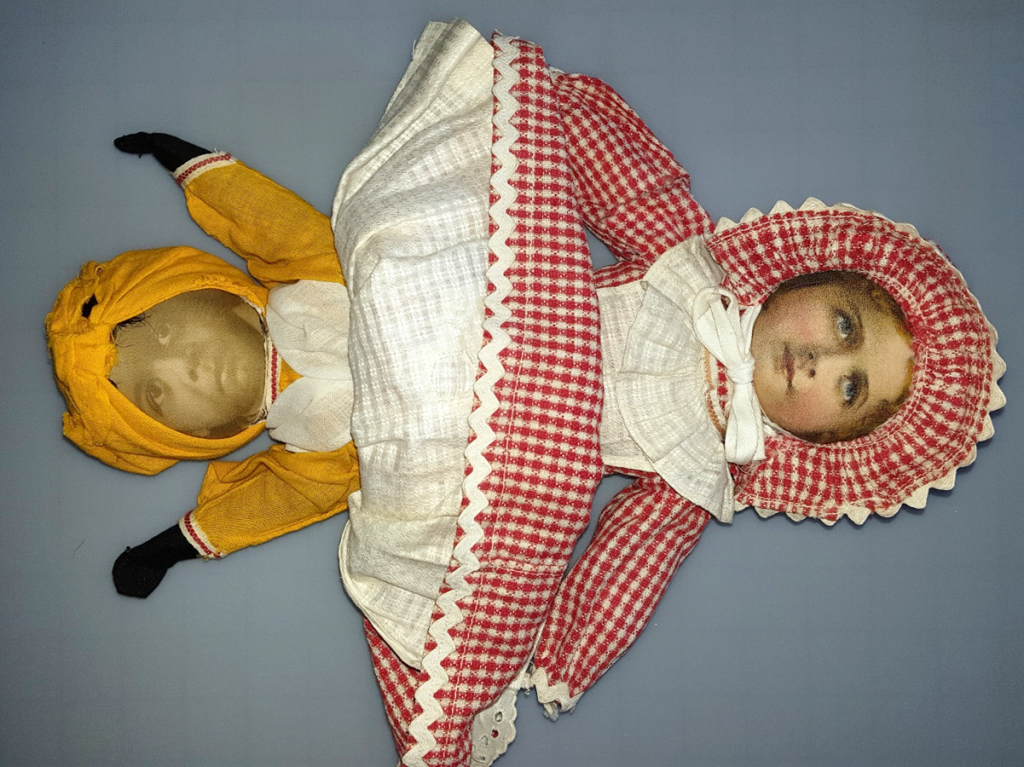

Have a website login already? Log in and start reading now.
Never created a website login before? Find your Customer Number (it’s on your mailing label) and register here.
JOIN HERE
Still have questions? Contact us here.


